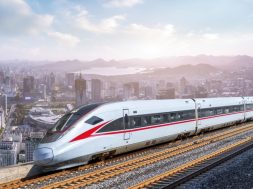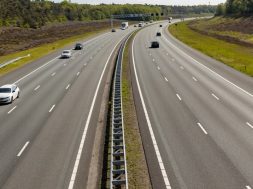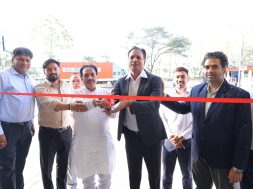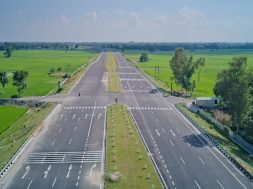Roads & Bridges: We need tech-advanced maintenance

This story discusses the difficulties that the monsoon poses for roads and bridges and how modern building materials and efficient maintenance techniques can increase their durability. It explores how severe rainstorms affect infrastructure and emphasises how crucial it is to implement creative fixes to guarantee the resilience and security of transport systems.
India’s roads and bridges face serious challenges during the monsoon season because excessive rainfall frequently causes waterlogging, erosion, and structural damage. These seasonal downpours make clear the vulnerabilities in the current infrastructure, underscoring the need for more resilient building techniques and efficient maintenance plans.
Every year, as the monsoon clouds roll in over India, the country’s road infrastructure faces a harsh reality along with the prospect of relief from the summer heat. India’s transportation networks are vulnerable during the monsoon season, which runs from June to September and signals the advent of rain. During prolonged periods of heavy rain and strong storms, road conditions become a major problem because they expose flaws in building material selection, repair methods, and maintenance schedules.
India’s vast road network is put to the ultimate test as the monsoon the season moves through the nation. The wet season continues to highlight the shortcomings and risks of this essential infrastructure, even though there has been a notable 59 percent growth in road and highway infrastructure over the previous nine years. The severe conditions on India’s roadways during the monsoon season highlight the pressing need for improved upkeep, repairs, and building techniques to guarantee the durability and security of these vital transportation routes.
Major streets and highways in Mumbai are still rife with potholes, posing a serious threat to the city’s transportation infrastructure. Despite numerous attempts at band-aid solutions, the situation has worsened, prompting experts to advocate for a comprehensive strategy for road upkeep and repair. Experts contend that the ongoing problem is caused by the failure to address core issues and instead rely on band-aid fixes. These stopgap fixes frequently fall short in the city’s severe weather and hectic traffic patterns. They highlight the necessity of employing better materials and conducting appropriate resurfacing as part of a more long-lasting strategy for road maintenance.

Challenges
While crucial for agriculture and replenishing water resources, the monsoon rains pose significant challenges to road infrastructure. The intensity of rainfall often overwhelms existing drainage systems, leading to waterlogging, erosion, and structural damage. The effects are visible through potholes, cracks, and surface wear that disrupt transportation and daily life.
Waterlogging and Erosion-Prolonged water exposure weaken the road surface, leading to erosion and the formation of potholes. Stagnant water exacerbates the deterioration, causing further damage to the roadbed and increasing repair costs. Surface Wear-Heavy rainfall accelerates the wear and tear of road surfaces. Asphalt and concrete can suffer from rutting, cracking, and surface peeling, diminishing the road’s load-bearing capacity and safety. Many roads suffer from inadequate drainage systems. Inefficient drainage leads to prolonged water stagnation, further deteriorating the road infrastructure.
Maintenance and repair
Maintenance and repair of roads during the monsoon are critical but challenging tasks. The conventional approach to road maintenance involves periodic inspections and reactive repairs, which often fail to address the underlying issues exacerbated by heavy rains. Traditional repair methods, such as filling potholes and resurfacing damaged sections, provide only temporary relief. These repairs are often conducted without addressing the root causes, leading to recurring problems. To enhance road durability, some regions adopt preventive maintenance strategies, such as crack sealing and surface treatments. However, these methods are not universally implemented and can be costly.
Improving drainage systems is essential for managing stormwater and preventing waterlogging. Installing roadside drains, culverts, and Proper grading can mitigate some adverse effects of heavy rains. The choice of building materials significantly influences the resilience of roads to monsoon conditions. Traditional materials like asphalt and concrete is limited in dealing with extreme weather.
Polymer-modified bitumen is a material that enhances the water resistance and flexibility of asphalt, making it more suitable for monsoon conditions. It helps reduce the impact of water-induced damage and extends the road’s lifespan. Cold Mix Asphalt Cold mix asphalt is used for road repairs and maintenance. It is more flexible and can be applied in wet conditions, making it a viable option for monsoon repairs. Geosynthetic materials, such as geotextiles and geogrids, reinforce road foundations and improve drainage. They provide additional support to the roadbed and enhance stability under wet conditions.
These pavements allow rainwater to infiltrate the surface, reducing waterlogging and the associated damage. They are instrumental in urban areas where water drainage is a major issue. We spoke with industry experts who provide valuable perspectives on road maintenance and construction practices to gain a deeper understanding of the challenges and solutions.
The traditional approach to road construction is proving inadequate for the monsoon’s demands. We must integrate advanced materials and construction techniques that offer better resistance to water damage and ensure longer-lasting roads. Effective maintenance is not just about patching up damages. It involves a comprehensive strategy that includes improved drainage systems, regular inspections, and durable materials. Proactive measures can significantly enhance road performance during the monsoon.
Some regions in India are pioneering innovative solutions and best practices to address the challenges posed by the monsoon season. These include implementing smart drainage systems equipped with sensors and automated controls to manage stormwater efficiently and prevent waterlogging. Additionally, incorporating green infrastructure, such as rain gardens and bioswales, is effective in managing stormwater and mitigating its impact on roads. Collaborative efforts between government bodies, private sector players, and local communities are also key to developing more sustainable road maintenance strategies.
A multifaceted approach is essential to improve the condition of roads in India during the monsoon. This includes investing in advanced materials and technologies to enhance road durability and resistance to water damage. Upgrading drainage infrastructure is also critical for managing stormwater and preventing road deterioration.
Furthermore, establishing a robust maintenance schedule with regular inspections and timely repairs can address issues before they escalate. Public awareness and engagement are equally important, as educating the public about road safety and the need to report road issues can significantly support maintenance efforts and improve overall road conditions.
Cookie Consent
We use cookies to personalize your experience. By continuing to visit this website you agree to our Terms & Conditions, Privacy Policy and Cookie Policy.






